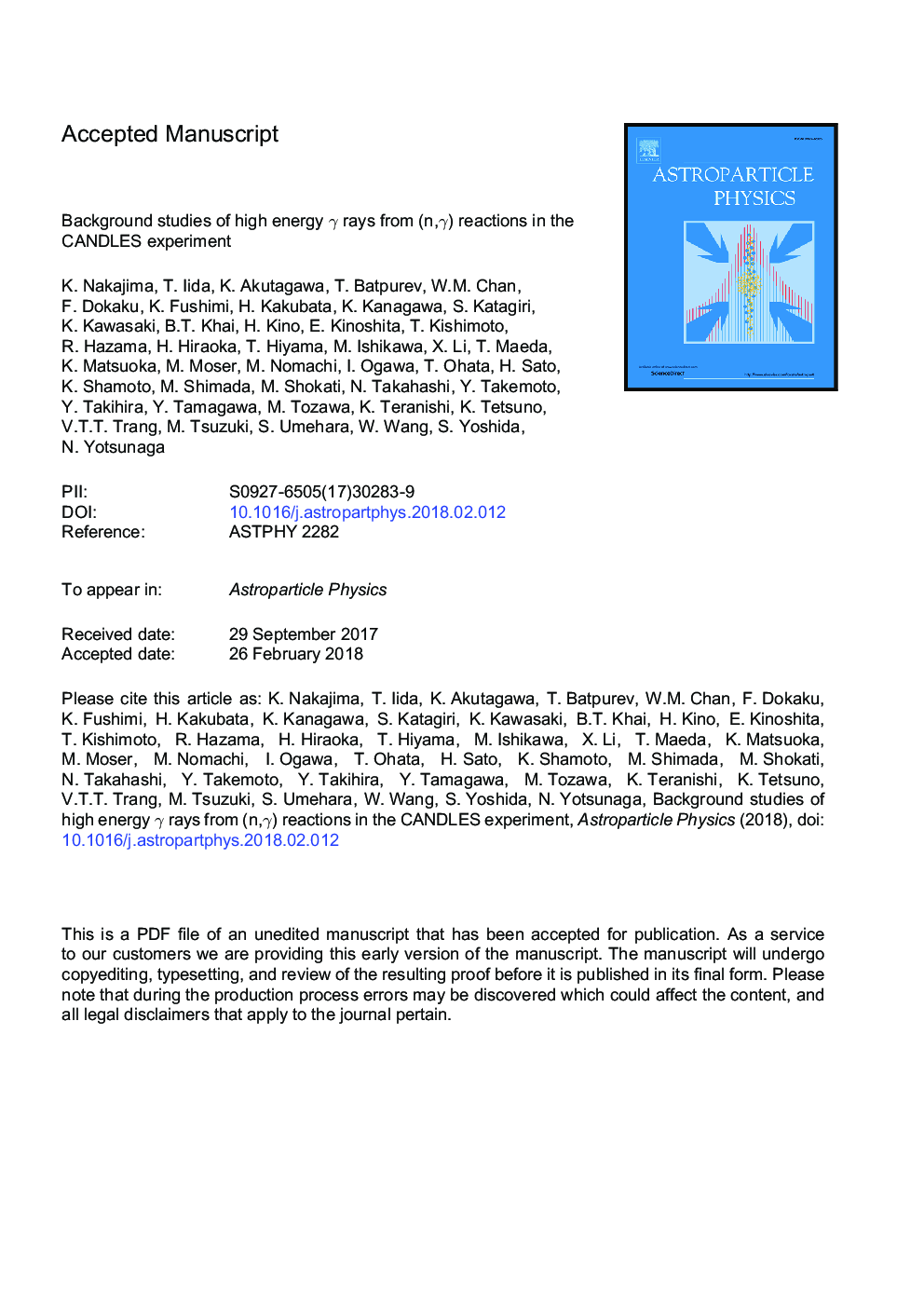| Article ID | Journal | Published Year | Pages | File Type |
|---|---|---|---|---|
| 8132701 | Astroparticle Physics | 2018 | 19 Pages |
Abstract
High energy γ rays with several MeV produced by (n,γ) reactions can be a trouble for low background measurements in the underground laboratories such as double beta decay experiments. In the CANDLES project, which aimed to observe the neutrino-less double beta decay from 48Ca, γ rays caused by (n,γ) reactions were found to be the most significant background. The profile of the background was studied by measurements with a neutron source and a simulation with a validity check of neutron processes in Geant4. The observed spectrum of γ rays from (n,γ) reactions was well reproduced by the simulated spectra, which were originated from the surrounding rock and a detector tank made of stainless steel. The environmental neutron flux was derived by the observed event rate of γ rays from (n,γ) reactions using the simulation. The thermal and non-thermal neutron flux were found to be (1.3±0.6)Ã10â6 cmâ2sâ1 and (1.1±0.5)Ã10â5 cmâ2sâ1, respectively. It is necessary to install an additional shield to reduce the background from (n,γ) reaction to the required level.
Related Topics
Physical Sciences and Engineering
Physics and Astronomy
Astronomy and Astrophysics
Authors
K. Nakajima, T. Iida, K. Akutagawa, T. Batpurev, W.M. Chan, F. Dokaku, K. Fushimi, H. Kakubata, K. Kanagawa, S. Katagiri, K. Kawasaki, B.T. Khai, H. Kino, E. Kinoshita, T. Kishimoto, R. Hazama, H. Hiraoka, T. Hiyama, N. Yotsunaga,
